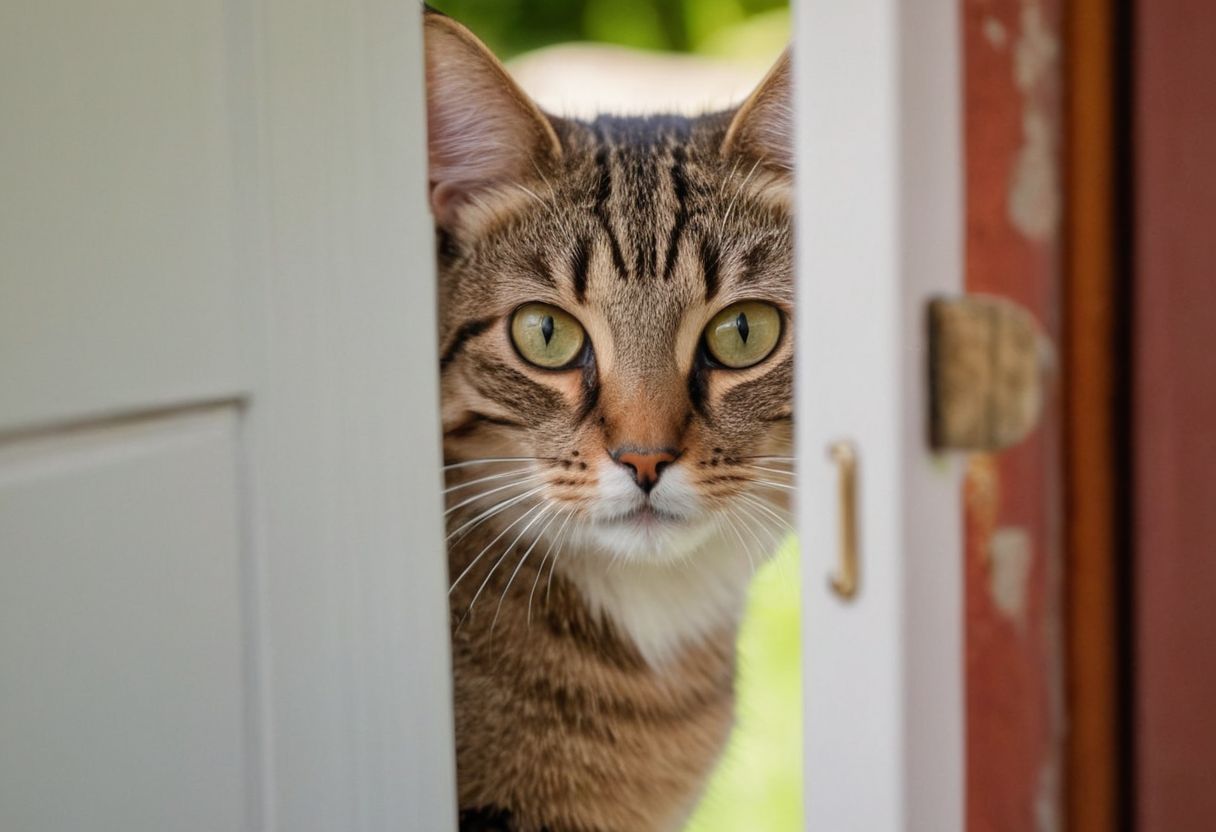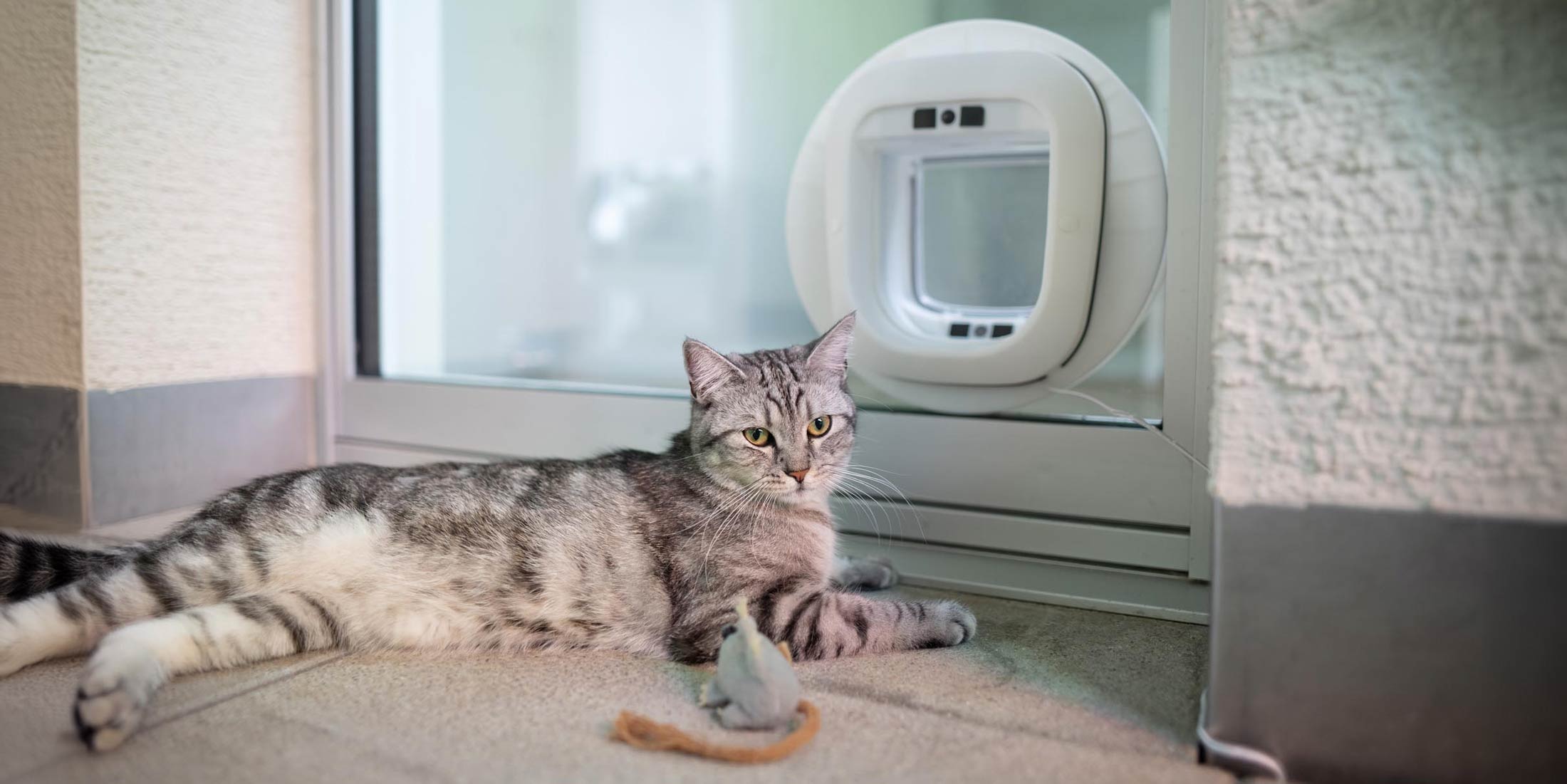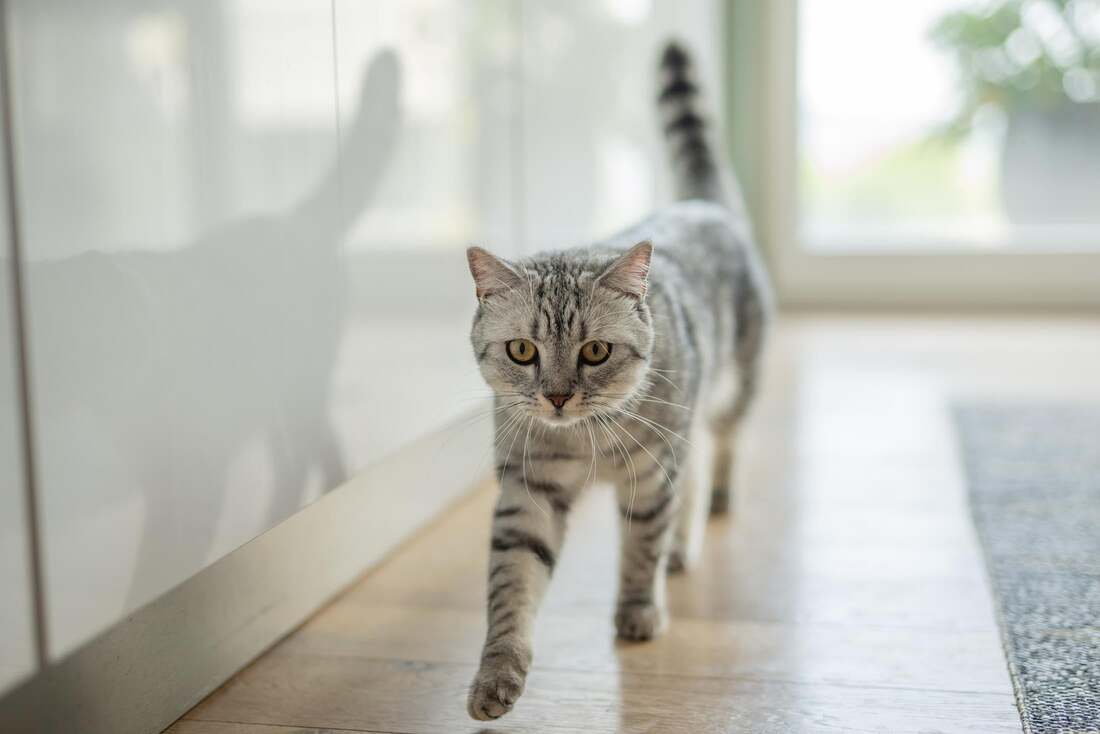When is the right time to allow your cat the freedom to go outside?
Many cat owners are unsure when and how they can safely let their beloved four-legged friends outside.
Cats should not be released into the open air until they are at least seven months old and have been neutered.
In this article, you will learn everything you need to know about the right age for outdoor access, how to prepare your cat for it and what safety measures you should take.
At what age are cats allowed to go outside?

Cats are naturally curious creatures who love to explore their surroundings. But at what age is it safe to let them go outside? As a general rule, cats should be at least seven months old before they are allowed to explore the outside world. At this age, they have received their basic vaccinations and are usually neutered, which is important for both health and behavioral reasons. By this time, they also have better control over their motor skills and are less impulsive, which reduces the risk of accidents.
However, individual cat development can vary, and some may be ready sooner than others. Here are some points to consider before allowing your cat to go outside:
- Health status : Is the cat healthy and robust enough to go outside?
- Behavior : Does she display cautious behavior or is she overly fearless?
- Environment : Is the environment safe and free from heavy traffic and potential hazards?
Ultimately, the decision is yours, based on your cat's temperament and health as well as the conditions in your area.
Getting cats used to going outside safely

Getting your cat used to going outside is a gradual process that requires patience and attention. Before you let your cat outside , it's important to build a trusting relationship with him. This will help him feel safer outside and more willing to return home. Start by getting your cat used to the sounds and smells of the outside world by opening windows and letting him explore outside in a safe environment.
You should also make sure your cat has all the necessary vaccinations and is healthy before letting her out. Practice recall with her before she goes outside alone, and start the first few walks under your supervision. This will give you the opportunity to observe her reactions and make sure she is comfortable and safe.
Preparations before the first outdoor session
Before you let your cat out for the first time, there are a few important preparations to be made. Make sure your cat is microchipped and registered in case it gets lost. In addition, all necessary vaccinations and deworming should have been carried out. Also check the surrounding area for potential sources of danger such as open water sources or busy roads and secure them accordingly.
Safety precautions for outdoor exercise
The safety of your cat when it is outside is a top priority. It is advisable to install a cat flap that only allows access for your cat. This prevents other animals from entering the house. Also make sure that your cat has received all the important vaccinations to minimize the risk of disease. Consider whether a GPS tracker would be useful to be able to track your cat's whereabouts at all times.
Benefits of Outdoor Access for Cats
Going outside not only gives cats the opportunity to explore their surroundings, but also has numerous health benefits. Exercising in the fresh air can help prevent obesity, which is particularly important as overweight cats are more susceptible to various diseases such as diabetes. It also promotes digestion and reduces general stress levels, resulting in a more balanced and contented pet. Outdoor cats are often more robust and healthy:
- They move more and thereby build physical fitness.
- They have fewer weight problems compared to indoor cats.
- The mental state improves because boredom is avoided.
In addition to the health aspects, going outside also allows cats to live out their natural instincts. They can hunt, climb and explore their territory, which provides not only physical but also mental stimulation. This contributes to a better quality of life and can minimize behavioral problems that arise from understimulation. Cats that are regularly outside often show a more balanced and contented behavior because they can live out their energy and natural behaviors:
- Climbing and exploring promotes mental health.
- Exercising the hunting instinct prevents frustration and boredom.
- Contact with nature and possibly other cats promotes social skills.
Restricted outdoor access: Safe in your own garden
If you allow your cat to roam freely but are concerned about their safety, restricting outdoor access to your own garden is a good solution. You can design your garden to be safe and fun for your cat without them having to leave the property. By installing a high fence and anti-climbing barriers in your garden, you create a safe zone where your cat can roam freely. This gives you control over their environment and minimizes the risks that lurk outside the garden.
To make your garden even safer, you can take the following measures:
- Make sure the fence is anchored deep enough in the ground to prevent digging.
- Avoid poisonous plants and dangerous gardening tools around your cat.
- Offer places to retreat and shady spots so that your cat feels comfortable outside.
These measures will turn the garden into a safe haven for your cat, giving them the freedom to enjoy nature without you having to worry about their safety.
Recognizing dangers for cats when walking outdoors
While outdoor access provides a wonderful opportunity for cats to exercise their natural instincts and explore their surroundings, it also presents numerous dangers. It is crucial that you, as a cat owner, know the risks and take steps to minimize them. This includes understanding the environment your cat will be in. Each area has its own specific dangers, whether it be heavy traffic, poisonous plants or the presence of other animals that could harm your cat.
It is important to gradually introduce your cat to the outside world, always keeping in mind its safety. Before letting your cat out, make sure it has all the necessary vaccinations and is healthy. It is also advisable to supervise your cat's outdoor activities, especially during the first few days, to make sure it feels safe and there are no sources of danger nearby. Here are some steps you can take:
- Check the area for potential hazards such as open water sources or busy roads.
- Install a cat flap to ensure your cat has safe entry and exit.
- Practice recall with your cat so that he comes back on command, which is especially important if he finds himself in a dangerous situation.
Risks of Outdoor Access for Cats
Letting cats go outside poses various risks that can have serious consequences. The main dangers include traffic and other animals. Cats are often unable to correctly judge the speed of approaching vehicles, which can lead to tragic accidents. Likewise, encounters with other animals, such as dogs or even wild animals, can lead to injuries or the transmission of diseases. To minimize these risks, it is important that you as an owner take precautions and supervise your cat well, especially during the first few days of going outside.
Safe outdoor access with Flappie's intelligent cat flap
When you let your cat out, you want to make sure they're safe and don't bring home any unwanted "gifts." That's where Flappie 's smart cat flap comes in. This innovative solution offers selective access control that only allows your cat to enter, while also detecting whether they return alone or with prey. The flap features a camera and AI technology that can identify prey such as birds or mice. When prey is detected, the system denies the cat entry until it lets the prey out.
The benefits of Flappie 's smart cat flap are many and will help keep your home clean and safe while your cat enjoys the freedom of being outdoors. Here are some of the key features:
- Selective access control : Prevents other animals or your cat from entering the house with prey.
- Prey detection through AI-controlled camera : Ensures that no unwanted prey gets into the house.
- Flappie App : Allows you to control the cat flap from anywhere and gives you notifications about the status of the flap and your cat's activities. Visit https://flappie.ch to learn more about this technological innovation and how it can make outdoor access safer for your cat.
Frequently Asked Questions
When can a young cat go outside?
A young cat should not be allowed to go outside until it is at least seven months old. By this time, the basic vaccinations have been completed and the cat is usually already neutered, which is important for both health and behavioral reasons.
When can a new cat go outside?
A new cat can begin outdoor exposure when it is at least seven months old, has had its basic vaccinations and is neutered. This ensures that it is healthily and behaviorally ready for the outside world.
How do I get young cats used to going outside?
To get young cats used to going outside, you should first build a trusting relationship with them and slowly get them used to the sounds and smells of the outside world. Start by opening windows and letting your cat explore outside in a safe environment. Also practice recall with her and start the first outdoor walks under your supervision.
How long do you have to keep a cat indoors before letting it go outside?
There is no specific length of time a cat must stay indoors before going outside for the first time, but it is important that it is at least seven months old and has received all necessary vaccinations and has been neutered. Individual readiness may vary depending on the cat's health and behavior.





Share:
Make your own scratching toy for cats: A guide
Training Tips for Hunting Domestic Cats: Tips and Tricks